The Ngorongoro Crater, poetically referred to as 'Africa's Garden of Eden', is a unique natural wonder located in northern Tanzania. The crater lies within the larger Ngorongoro Conservation Area. This wildlife zone covers a large territory of 1,892 sq. km (730 sq. mi).
The massive Ngorongoro Crater caldera was formed when a large volcano, roughly the size of Mount Kilimanjaro, erupted and collapsed. That happened over 2.5 million years ago. Today, it's one of East Africa's top iconic safari destinations. The Ngorongoro Crater is over 600 m (1,968 ft) deep and spans an area of 259 sq. kilometers (100 sq. mi).
The best time to visit Ngorongoro Crater with your own eyes is from May to October, during Tanzania’s dry season. This period offers the best wildlife viewing opportunities as animals tend to gather around water sources. Visits to this popular site during the other times of the year are also possible, offering unique advantages. During the rainy season from November to April, you will enjoy spectacular green landscapes and off-season discounts. However, animal viewing is trickier since many smaller creatures hide in the tall grass, rearing their young.
Ngorongoro Crater safari is included in many safari package tours. It is located near other famous Tanzanian wildlife zones like Tarangire and Serengeti National Parks. Mount Kilimanjaro is also not far, making a combination of trekking and game viewing a popular option. Safari tours typically start from the city of Arusha, accessible via Kilimanjaro International Airport.
What is unique about Ngorongoro Crater? Interesting facts about Ngorongoro Crater
Below we will share some exciting and lesser-known Ngorongoro Crater facts. Join us to learn more about this unique UNESCO World Heritage Site, selected as one of Africa's Seven Natural Wonders in 2013.
The highest density of wild animals in the world
Tanzania's Ngorongoro Crater is renowned as the place with one of the highest densities of wild animals in the entire world. The unfilled volcanic caldera serves as a gigantic "natural zoo", hosting thousands of animals, including a large population of lions, elephants, wildebeest, and even rhinos.
Looking down from the crater rim, you will see a vast and empty expanse enclosed by towering walls, but wait until you drive down to the crater floor! Ngorongoro Crater Safari is one of Northern Tanzania's most iconic activities, and you don't want to miss it.
The largest unbroken volcanic caldera on the planet
The Crater is a unique unbroken caldera, the largest in the world. How was the Ngorongoro Crater created? Calderas typically form when a volcanic cone collapses under its own weight. This happened at Ngorongoro over 2 million years ago. Craters resulting from eruptions of ancient volcanos are rarely preserved so well.
The wall of the Ngorongoro Crater rises almost 200 stories high, imagine that! The Crater's geological history combined with amazing wildlife diversity make it a very special destination.
The Ngorongoro was home to our ancient ancestors
This area is rich in archaeological sites that have provided key insights into the earliest human evolution. Most interesting discoveries include ancient footprints dating back millions of years. These findings make Ngorongoro Conservation Area one of the key locations in the world for understanding early humans.
Another archaeological site located nearby is the Olduvai Gorge, sometimes referred to as the "Cradle of Mankind". It's a ravine in the Great Rift Valley where the eminent British archaeologist Dr. Louis Leakey enhanced our understanding of human evolution through his research. His most notable discovery, the Homo habilis skeleton at Olduvai Gorge near the Ngorongoro Conservation Area, helped us understand the earliest origins of the human race. Today, visitors can explore Olduvai Gorge and its museum, where ongoing excavations continue to uncover artifacts of high importance.
A UNESCO World Heritage Site
Over the past century, the Ngorongoro Area has seen a variety of conservation laws and various initiatives. Initially designated in 1959 as a unique area where wildlife and humans could coexist, UNESCO recognized it as a World Heritage Site in 1979 for its outstanding natural and cultural significance. This designation helps protect the rich biodiversity of the area while supporting the indigenous tribes who call those lands home. Today, this zone is managed by the Ngorongoro Conservation Area Authority (NCAA) and attracts significant tourist flow.
There is a 7-mile lake inside the Crater
One of the interesting Ngorongoro Crater facts is the presence of a large lake on the crater floor. In the southwest of the Ngorongoro Crater lies a beautiful shallow soda lake known as Lake Magadi or Lake Magad. It's often visited by thousands of flamingoes, who thrive on the unique algae found in the lake. In addition, many larger animals can be seen by the lake, providing many opportunities for wildlife viewing.
The Crater is home to endangered black rhinos
There are some exceptionally rare animals in the Ngorongoro Crater Area. The crater serves as a refuge for the critically endangered black rhinoceros, among other animals. Due to the conservation efforts over the past decades, their numbers have slowly increased from being critically low in 1995. The Ngorongoro Crater now supports a small but significant population of over 20 rhinos. With some luck, you will be able to spot one of those majestic animals that unfortunately have become globally threatened species.
Luxurious lodges
One of the lesser-known facts about Ngorongoro Crater is that some of the most luxurious accommodations in the whole of Africa can be found on its crater wall. The area offers a variety of lodging options from budget-friendly to luxury, making your vacation both comfortable and memorable. If having access to all modern conveniences and an unparalleled level of service amidst African wilderness sounds attractive, you have many amazing choices!
Such lodges include the Lake Ndutu Tented Lodge, the Ngorongoro Serena Safari Lodge, and many others These hotels provide stunning views and direct access to the natural beauty of the crater and the surrounding Ngorongoro highlands.
Over 42,000 people are living in the Ngorongoro Conservation Area
98% of the people living in the area are Maasai - the indigenous people of Ngorongoro. The main inhabitants of this region used to be the Barabaig and Datooga people. However, they were pushed off their lands by the Maasai and are now a minority population concentrated towards the south and east of the area.
Over time, the Maasai pastoralists have transitioned from a nomadic lifestyle to a more settled one, with increasing emphasis on education. Now they have to go to school, and many choose to move to the cities.
The Great Migration can be seen here
Annually, the Great Migration involves millions of wildebeest and zebras that move through the Ngorongoro Conservation Area and the Serengeti National Park. This is a great opportunity to see African animals in all their glory and witness the largest movement of large mammals on the entire planet.
Featured in numerous movies and documentaries
The beauty of The Ngorongoro Crater is so unique that the area has been used as the location for many fiction and non-fiction films. And it's easy to guess why. Notable films include "Great Natural Wonders of the World" and "Living Earth," which highlighted the crater's scenic and ecological importance. The area's cinematic appeal continues to draw filmmakers, influencers, photographers, and travelers fascinated by its natural beauty.
Incredible biodiversity
There are 300 Species of large animals living in The Ngorongoro Conservation Area. If you add birds and insects, the count will easily reach thousands. The Ngorongoro crater is often referred to as the place with the highest density of large mammals on the planet. Its large population of lions stands in particular. The Crater is renowned for its rich wildlife that are accustomed to visitors, which makes for a perfect wildlife viewing destination. However, you will not find giraffes here; the crater’s steep sides are not navigable for these creatures.
A birder's paradise
There is a huge array of bird species to spot here. The Crater and the broader conservation area is a haven for birdwatchers with over 550 species of birds. From flamingoes and ostriches to birds of prey and tiny sunbirds, the variety here is astonishing. Many rare species like Livingstone’s Turaco will delight anyone interested in Tanzania's avian species.
Final thoughts
The Ngorongoro crater stands out as a truly iconic destination. It's the world's largest inactive volcanic caldera that has remained intact and unfilled with water. This unique site presents exciting opportunities for travelers to see diverse wildlife and enjoy the unmistakable landscapes of the Ngorongoro Crater. The Ngorongoro Conservations Area is also an important conservation zone, preserving the biodiversity of this region.
Interesting going on a Ngorongoro Crater safari? Consider booking a tour with a reputable local operator like Altezza Travel.














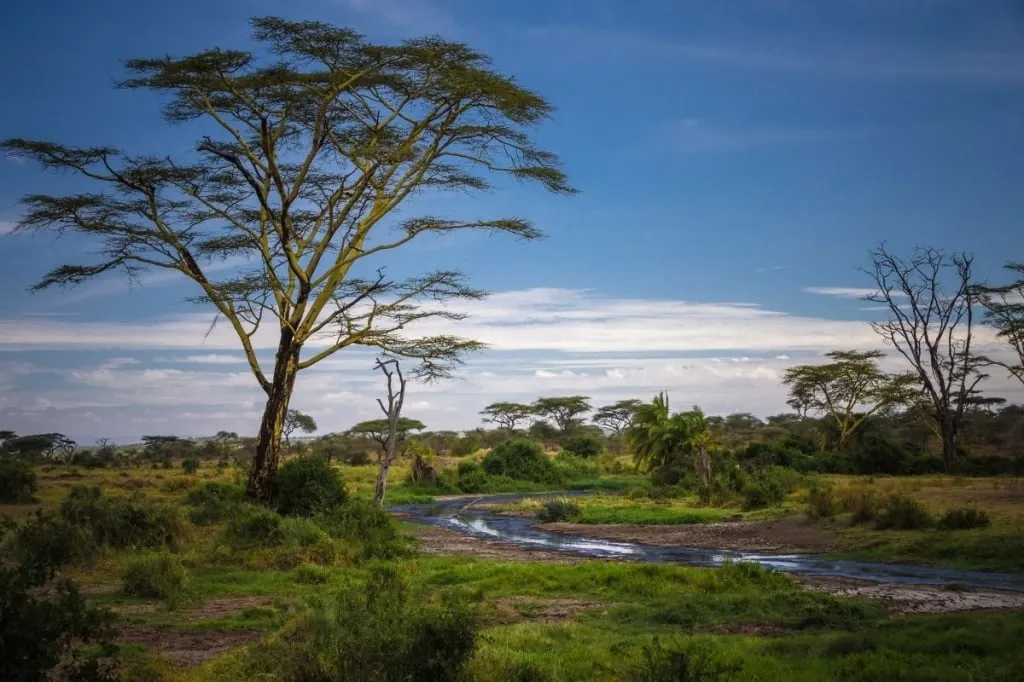
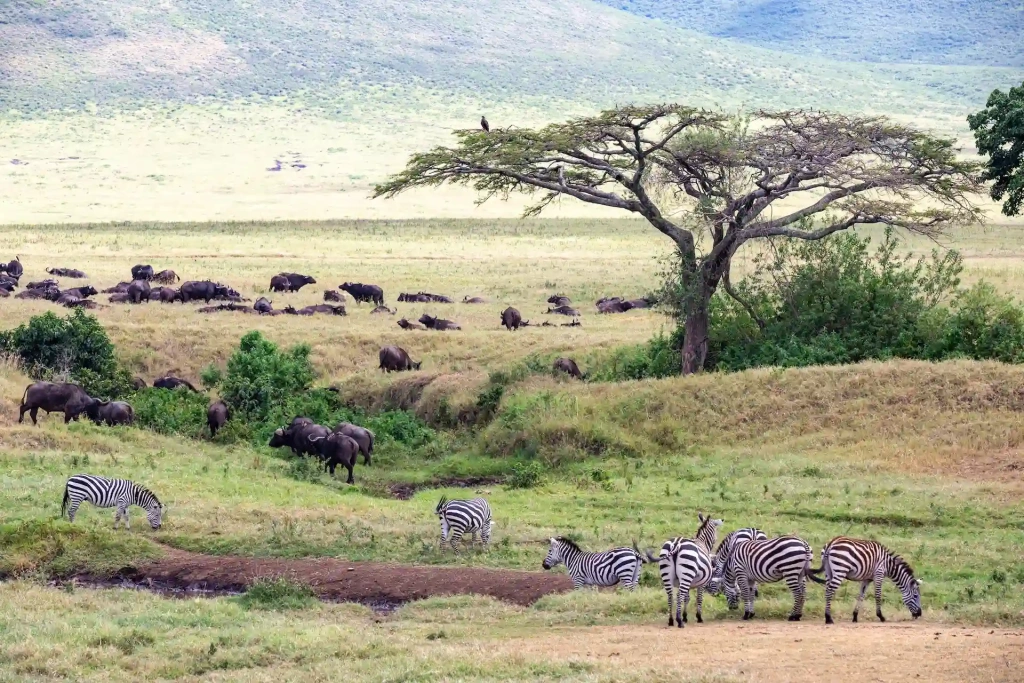
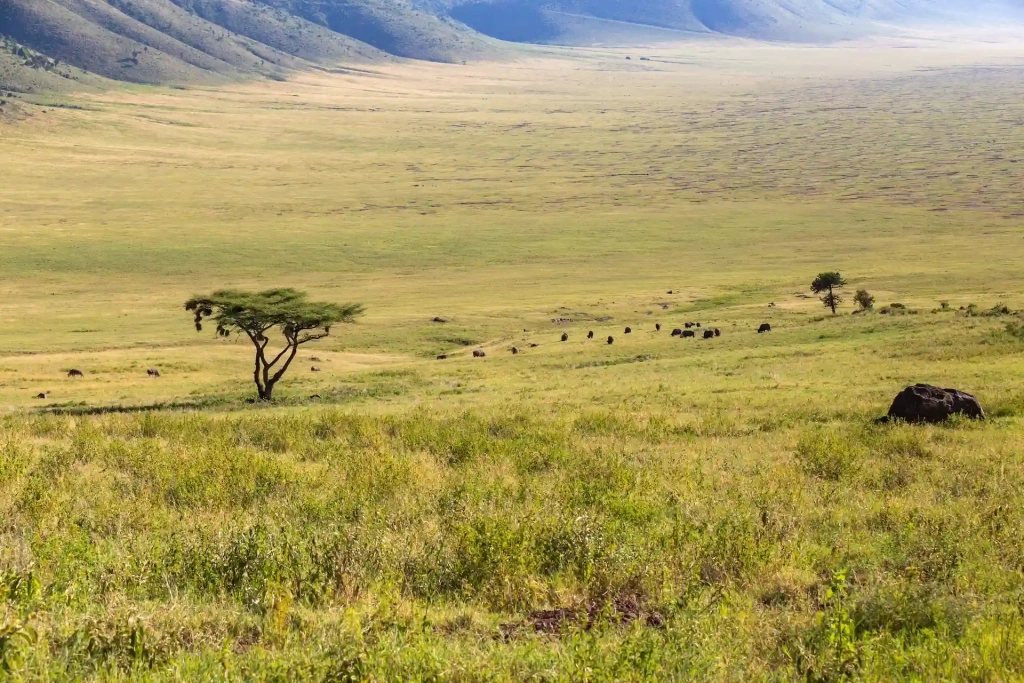
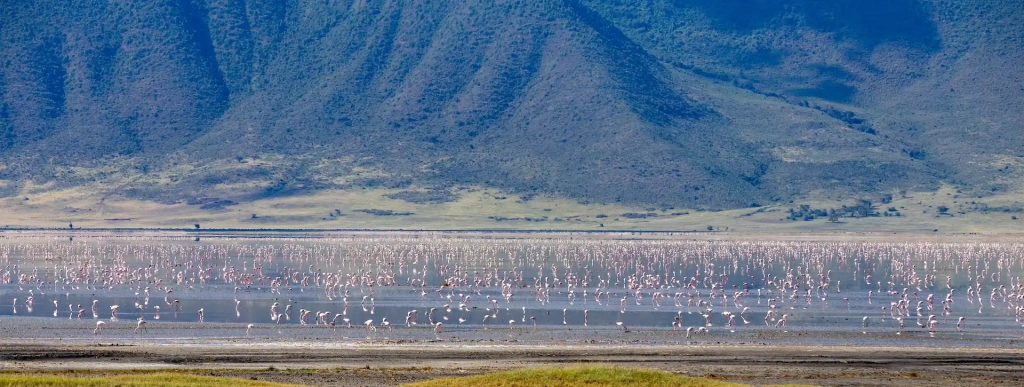
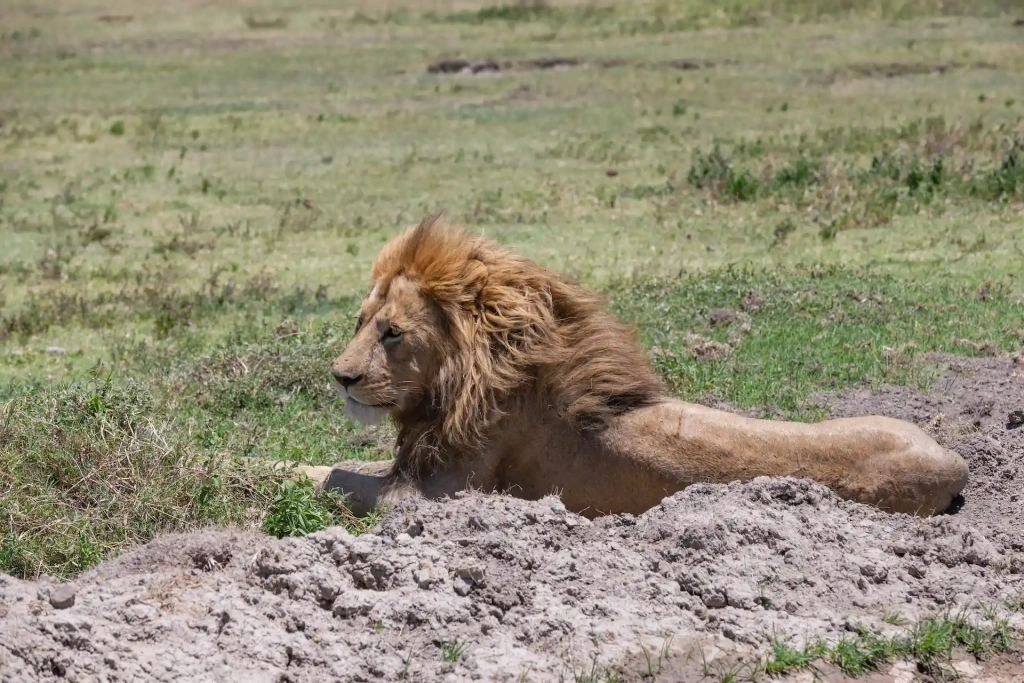


A day trip to Ngorongoro is really not advisable, since the transfer from Arusha to the park gate will take around 4 hours. Adding the road on the crater rim and the descent, the drive will take about 6 hours in total. Therefore, by the time you arrive inside the crater from Arusha, you will have a maximum of 1-2 hours before you need to begin the 6-hour journey back.
If you are limited by time, the best option would be to visit Tarangire on Day 1, then around 16:00 drive towards Ngorongoro and stay overnight nearby or even on the crater rim (if your budget allows). Then, on Day 2, you can start your safari inside the crater early in the morning. After lunch, you will drive back to Arusha.